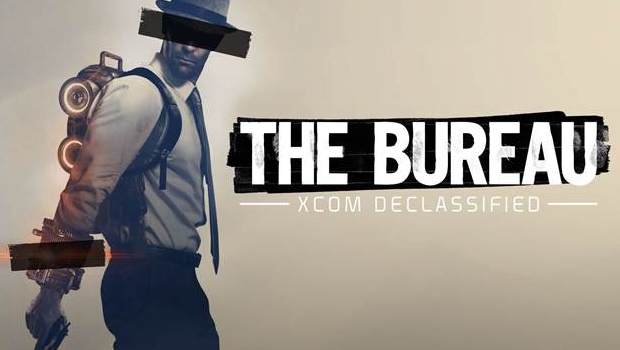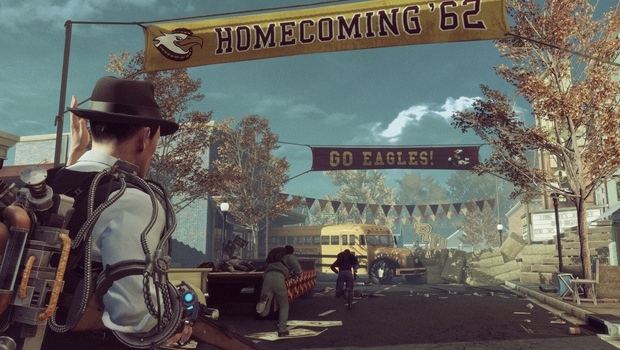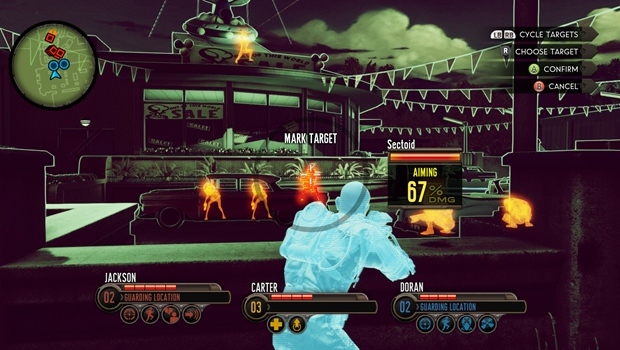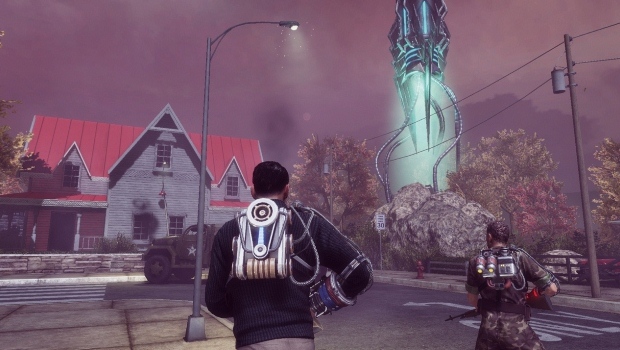When a game is in development for years and switches design concepts multiple times, it can be a scary thing. Before Firaxis released X-COM: Enemy Unknown, X-COM was going to make its revival in the form of a shooter. Even the type of shooter changed drastically since X-COM’s planned revival. In 2010, it was pitched as a first-person shooter set in the 1950s. Later that year it was announced as a sort of survival-horror title. Strategy games were deemed irrelevant at the time by a 2K rep, and the project shifted to a third-person tactical shooter the following year in 2011. Fast forward a number of years, The Bureau: X-COM Declassified is finally released. But following up last year’s gem isn’t an easy task.
I played as Agent Carter, an agent who gets called down to the X-COM division after things go sideways concerning an artifact. Built around an obvious alien invasion, my crew and I were tasked with stopping the impending demise of the human race. The plot throughout the roughly 10-hour game felt a little dry, but the twist (which I won’t spoil) toward the end made up for that. That twist finally engaged and hooked me into the story. It was kind of a bummer that only the last fraction of the game caught my attention like that, but at the end of it all it made for a more positive experience.
Much like Enemy Unknown, The Bureau let me customize my squad to a certain degree. The main protagonist can only change his clothing colors, but the two squad mates that I brought into battle with me could also be customized by changing their names. Anyone who played and remembered Enemy Unknown can attest to the fact that this was one of the key features that made that game so popular. The effect in The Bureau isn’t quite the same, though. See, the characters in The Bureau all have this aesthetic to match the period of time the game takes place in. That’s all well and fine, but I have a hard time believing that our Editor-in-Chief, Chris Scott, is running around in the 1960s. At least with Enemy Unknown, the characters could slightly resemble people I knew. In this case, I couldn’t attach myself to any of the characters. So when Chris Scott perma-died late in the game, I really just thought it sucked that I lost my main medic. I didn’t have the same emotional bond that last years X-COM tricked me into.
Mission to mission, I could select from a few character classes to take with me. I never once organically needed to switch them, though. Once I found my favorite classes to take with me, and the skills I liked the most, I just rolled with those two partners and filled in the gaps. I preferred the turrets and mines of the Engineer and the shield of the Medic, so I focused on long range combat with sniper and assault rifles. It was nice, because I could play how I wanted and was never forced into awkward situations. I could simply enjoy the gameplay and carry on.
Squad mates are directed by slowing down time and issuing orders, generally from cover. I could have played the game by just ordering my two cohorts around the entire time, but that just slowed down the pacing and felt off. So I would issue a few commands, focus on shooting enemies myself, issue a few orders, and repeat. Another thing that carries over from Enemy Unknown is the cover system, and how the game lets the player know they are behind half cover or full cover. Issuing the orders in arenas where there were multiple heights on the playing field proved difficult at times, as the cursor took some time to get back to where I started if I were to accidentally drop off the ledge.
The Bureau is marred by some other technical difficulties, too, such as repetitive character motions during conversations and some frame rate drops. It’s something I generally dismiss, but it came up multiple times, specifically the former. Agent Carter would be talking to someone, and doing the same hand motions over and over, or some unusual head roll every few seconds. It was painful to watch and could have been one of the reasons the story was not very gripping. It’s hard to settle in and get involved in something when silly little things like that detract from focusing on the game.
It’s little things like that which make me wish 2K Marin had just a little more time and energy to refine the game just a little more. The Bureau: X-COM Declassified had an interesting ending that I really enjoyed, and it has some real promise that could be realized in a sequel. It is different enough from the standard shooter that I don’t regret my time with it at all. If they use this as a template and improve upon it, there is hope that a truly great game can come from it.
This review was written based off of gameplay on the Playstation 3 home console with material provided by the publisher. The Bureau: X-COM Declassified is also available on the Xbox 360 and PC platforms. For more on our review procedure, please read here.



